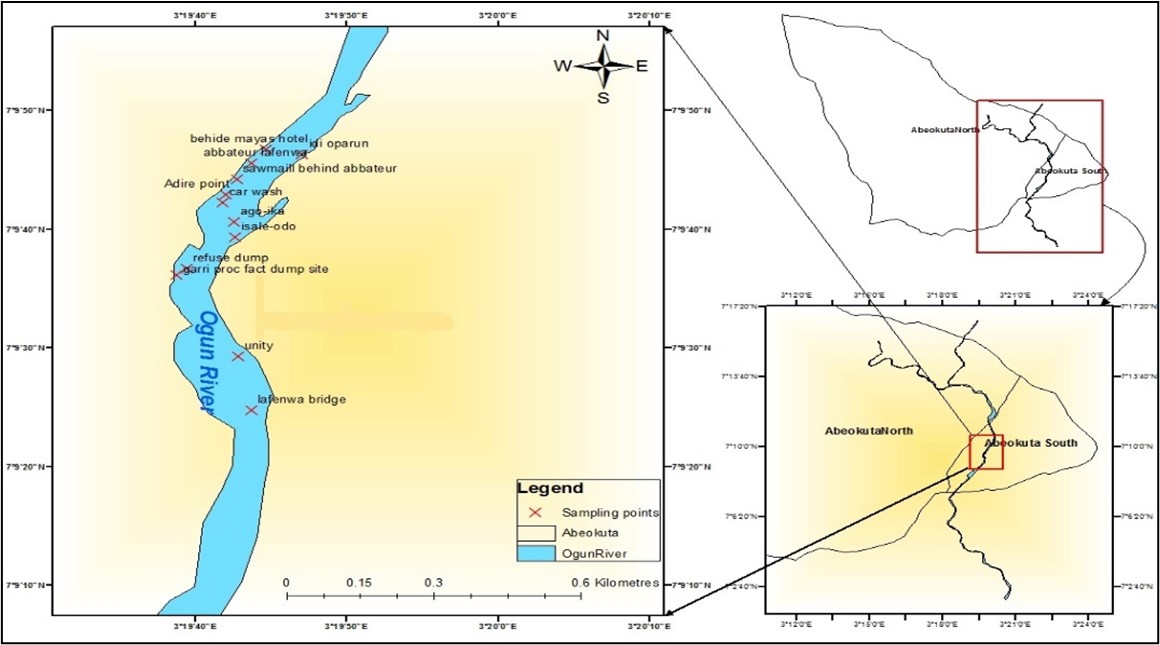Phosphorus Speciation and Heavy Metal Levels in Ogun River Sediments at Different Anthropogenic Locations in Abeokuta, Ogun State
Main Article Content
Abstract
Phosphorus (P) is an essential nutrient for phytoplankton growth in water bodies and an important element in biochemical processes. Also, excessive P in river causes eutrophication which endangers aquatic organisms while sediment acts as sink for inorganic and organic pollutants and nutrients. To assess the availability of P and heavy metals (HMs) in Ogun River, surface sediment samples were collected at twelve anthropogenic sites for three months. The surface sediment samples were sequentially extracted to determine five phosphorus fractions [loosely-sorbed P (LS-P), iron-bound P (Fe-P), authigenic apatite, biogenic apatite and CaCO3-bound P (CFA-P), detrital apatite (Det-P) and other inorganic P (IP) as well as organic P (OP)] and levels of selected HMs (Pb, Cr and Zn). Phosphorus fractions were determined spectrophotometrically and HMs were determined using atomic absorption spectrophotometer (AAS) after wet digestion. The average percentages of fractions of P in surface sediments were Det-P (34.66±1.00%) > Fe-P (27.67± 0.02%) > OP (18.11±2.00%) > authigenic apatite, biogenic apatite and CaCO3-bound P (14.38±4.56%) > LS-P (5.18±0.78%). It was observed that IP was dominant (86.38%) of the total phosphorus (TP) compared to OP (13.62%). One of the sites, Garri processing, had highest TP (710 µg P g-1) which was above the standard values for Chinese Environmental Dredging (500 µg P g-1) and Canadian Province of Ontario (600 µg P g-1) Sediment Quality Guidelines (SQG). The mean concentrations of HMs determined in sediments were below the SQG values except Zn in some sites. The results revealed moderate pollution of P and Zn and also, accumulation of these pollutants overtime might pose threat to aquatic organisms. The results obtained would serve as baseline values for P speciation in Ogun River.
Article Details

This work is licensed under a Creative Commons Attribution-NonCommercial 4.0 International License.
Published articles are under the copyright of the Applied Environmental Research effective when the article is accepted for publication thus granting Applied Environmental Research all rights for the work so that both parties may be protected from the consequences of unauthorized use. Partially or totally publication of an article elsewhere is possible only after the consent from the editors.

